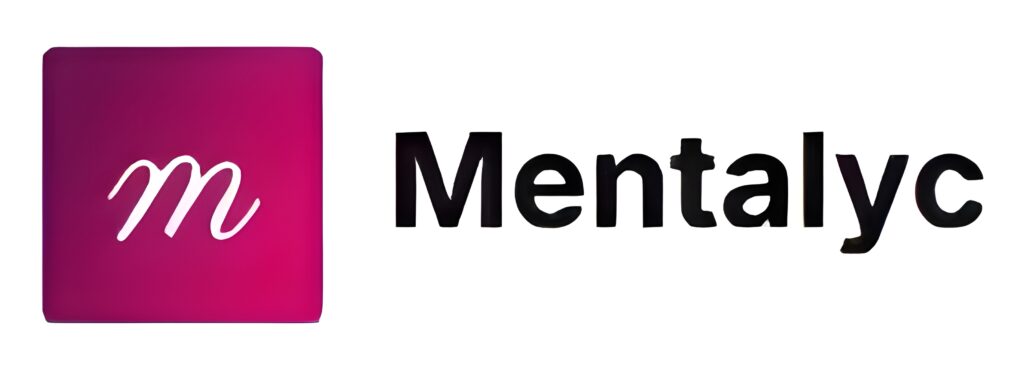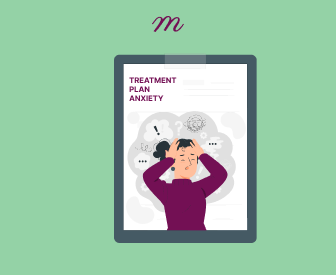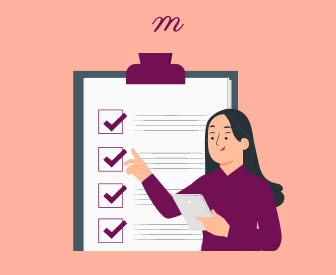Have your progress notes written for you automatically
Mental health professionals must document goals in their treatment plans and progress notes. If you accept insurance or deal with third parties, writing clearly defined goals and objectives are essential parts of your documentation.
Goal setting should be a collaborative process with your clients. It can be challenging to keep track of goals if you don’t have a specific format for measuring them. There are many ways to define and set realistic treatment goals for therapy.
Some therapists may be skilled in writing their own goals and treatment plans. Other therapists may use generative AI tools like Mentalyc or Wiley treatment planners to help define goals based on the clients presenting issue.
Having clearly defined goals and a way to keep track of goals helps ensure that you are protected in case of an insurance audit. You want to write goals that help you keep track of your client’s progress and help identify obstacles.
Learning to write goals that are realistic and specific can help you ensure that your goals are in shape for insurance reimbursement purposes. Insurance companies like it when psychotherapists write goals that are measurable and that have a target time frame. The more you learn to write goals like this, the easier it becomes.
What are Therapy Goals?
Goals in therapy pertain to what the client hopes to achieve in working with you. Therefore, goals should be clear, concise, and have measurable outcomes.
Goal Setting in Counseling and Therapy
Goal setting in counseling is the process of collaboratively establishing specific, measurable, achievable, relevant, and time-bound (SMART) goals between the counselor and the client. It is a fundamental aspect of the counseling process and helps to guide and structure the therapeutic journey.
To set SMART goals is the best method of setting goals in therapy. SMART goals can be beneficial for clients and clinicians.
How to write SMART goals?
Writing SMART Goal is easy. SMART is an acronym that stands for:
S-Specific:
When being specific about your client’s goals, you leave no room for misinterpretation. For example, a particular goal might be “The client states they want to decrease stress at work. The client will implement three stress management techniques and report on progress in the next two months. The client will track their stress levels each work day.” If you’re vaguer about your client’s goals, it may look like this, “The client wants to decrease stress at work.“
M-Measurable:
When you’re setting goals with your clients, you want to ensure that the goals you’re setting are measurable. Measurable goals provide you with a standard to track progress and evaluate outcomes.
Here is an example of a goal that isn’t measurable:
“The client wants to be nicer to their spouse in the next six months.”
Here’s an example of a measurable goal:
“In the next six months, the client will learn two assertive communication techniques, such as I statements, and implement them when communicating with their spouse at least twice weekly.”
A-Attainable:
Attainable goals are ones that the client can reach. For example, if a client says their goal is to save a million dollars by tomorrow, that is probably not attainable. However, it would be more feasible if your client said they wanted to save $50 weekly for the next three months to help with financial stress.
When assessing whether a goal or objective is attainable, it may be helpful to determine if your client has the time and resources to achieve the goal. Identifying potential obstacles to an objective can help you decide whether it is something your client is capable of doing.
R-Realistic:
Realistic goals are similar to attainable goals. If you’re setting a realistic goal with your client, you aren’t putting too much on them simultaneously. Instead, realistic goals help your client work towards something achievable.
One example of an unrealistic therapy goal is:
“The client will set healthy boundaries in all relationships in their life, and they will always speak to other people assertively.”
This goal sounds nice, but in theory, it is unrealistic as humans are imperfect, and that goal sets impossible standards.
A more realistic example of that goal would be:
“The client will learn two strategies for communicating assertively and identify one person they want to set a boundary within their life. Then, the client will discuss how to implement the limit with this person and address obstacles to setting boundaries in therapy.”
T-Timed:
Timed goals have a time frame attached to them so you can evaluate your progress with a goal. For example, if your client is working toward goals in therapy, many insurance companies require you to add a time frame to treatment plans and mental health progress notes.
Many insurance companies require you to update treatment plans at three and six months, so your original treatment plan should include time frames on goals.
An example of a timed goal is this:
“The client will implement two relaxation strategies in the next month to help him deal with increased anxiety due to family stressors.”
Without adding a timeframe, it’s unclear when the clients may reach their goals or their target date for completion.
How do I define goals with my client?
Defining goals should be a collaborative effort between you and the client. For example, the client states what they want to work on, and the mental health clinician asks specific questions about ways to reach those goals, including the client’s strengths and obstacles.
For example, if a client states they want to work on having healthier relationships with people in their life, you can break that down into different objectives for the overall goal. One objective might be learning and identifying how to set boundaries with people. Another objective may be focused on learning five healthy characteristics of a relationship. Each objective is different, but all tie into the primary goal of having more beneficial relationships with people in their life.
You can take those objectives and make them into SMART goals. Then you can check in with your client after a specified time and refer to original goals to track progress.
How can I keep track of client goals as a mental health professional?
One way to keep track of goals is to do this collaboratively with the client. It may be helpful to refer to original therapy goals and assess with the client how they think they are progressing with their goals. Many progress notes also ask that you document progress.
You may say that the client is progressing, not progressing, or that the goal was paused to focus on other areas of concern. It’s okay to shift your focus with a client to other objectives that may take priority. Likewise, if goals aren’t being met, it’s okay to document why the client is experiencing obstacles or challenges to reaching their original goals.
Goals and progress in therapy aren’t always linear. Your clients may have bad days or experience regressions, which is all part of being human. Sometimes your clients may experience setbacks beyond their control, which is okay. However, it may be helpful to document why it may be difficult for your clients to reach specific objectives.
Goals can also shift over time, so adding new goals and updating treatment plans and goals in progress notes is part of the ongoing therapeutic process.
Tools that can help you write goals
Many therapists may use tools to help them write goals for treatment plans and progress note documentation. Some therapists may use tools like Wiley treatment planners, which can help therapists by providing goals and objectives for various presenting problems.
You can also use goal worksheets with clients to help clients get clear about what they want to work on. These worksheets can be helpful for clients who don’t quite know where to start with therapy or what they want to work on.
You can also use generative AI tools such as Mentalyc, which helps write progress notes for you. For example, Mentalyc’s AI can help you track goal progress by picking up on details from your sessions that you might have missed. Mentalyc works by recording your therapy sessions and transcribing progress notes in less than two minutes. If you want to try this tool, you can sign up for Mentalyc here.
Overview of Goal Setting in Therapy
Goals in therapy are about what the client wishes to achieve. Goals can be created by asking clients what they hope to get from treatment and what they want to work on in therapy. When you write goals for treatment, you want to ensure that you’re writing SMART goals, as it can help you track progress when goals and objectives are noted.
Writing and assessing goal progress collaboratively with clients is a potential option that can benefit both the client and the therapist. Using tools such as treatment planners, goal worksheets, and AI tools can also help you write goals and keep track of goal progress.
Remember, progress for clients isn’t always linear. Some obstacles could get in the client’s way of reaching their goals. Allowing room to collaborate with your clients and working with clients to help them overcome challenges can be helpful in the therapeutic process.
Writing goals you can easily track gets easier as you practice them. You can use many tools to help you define, write, and track client goals. The client should always be aware of what goals you’re working on. Regular check-ins about progress can help the client feel in control and help you re-evaluate the therapeutic course if necessary.
Disclaimer
All examples of mental health documentation are fictional and for informational purposes only.









